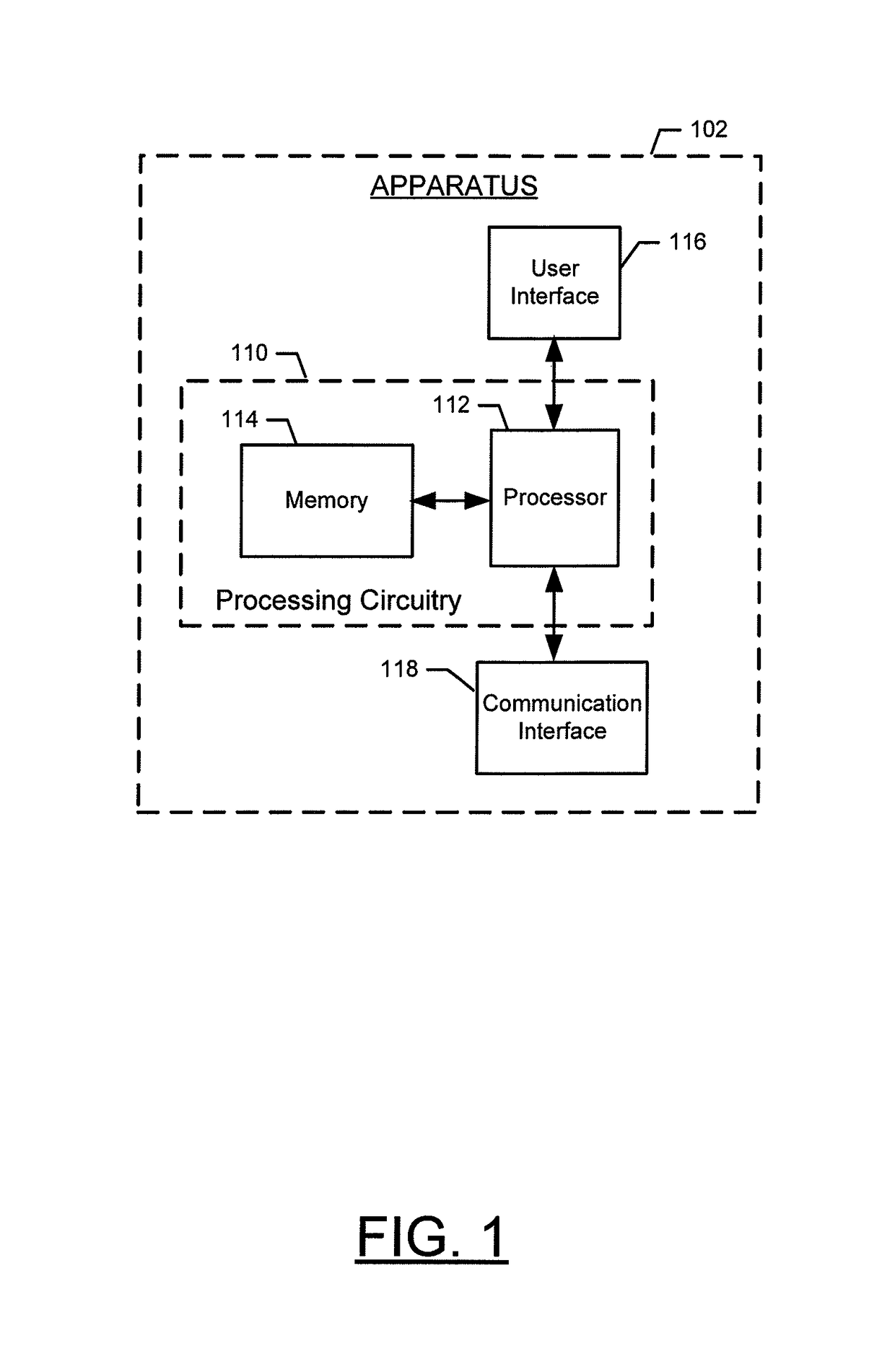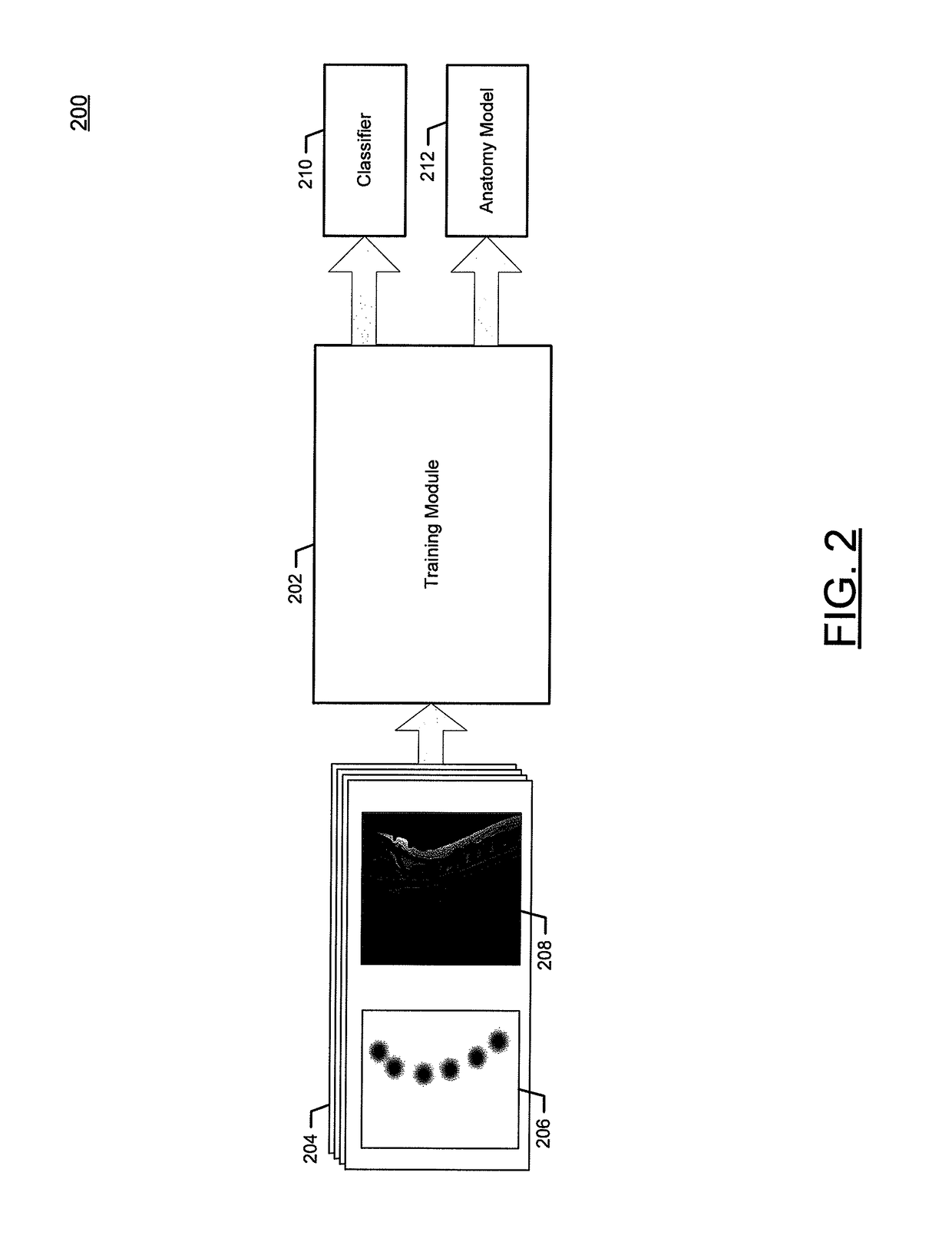Method and apparatus for detecting anatomical elements
a technology of anatomical elements and methods, applied in the field of medical imaging applications, can solve the problems of reducing the availability of practitioners to perform other tasks, affecting the detection effect, and affecting the patient's health, so as to improve the detection of anatomical elements
- Summary
- Abstract
- Description
- Claims
- Application Information
AI Technical Summary
Benefits of technology
Problems solved by technology
Method used
Image
Examples
example training
Set Data Flow
[0032]FIG. 2 is a block diagram of a process flow 200 for generating an image classifier and an anatomical model in accordance with example embodiments of the present invention. The process flow 200 may include a training module 202 that receives a set of training images 204. The set of training images 204 may include a plurality of images, including one or more target images 206 and one or more source images 208. The target images 206 represent a mapping of the location of particular anatomical elements to be detected by a generated image classifier. For example, a target image 206 might include data specifying the location of vertebrae in a spinal image. In the present example, the pixels of the target image 206 only display the locations of vertebrae. Each of the target images 206 may be associated with a particular source image 208, representing an image from which the corresponding target image 206 was derived. For example, a target image 206 and source image 208 p...
example labeling
Data Flow
[0034]Turning now to FIG. 3, an example data flow 300 for labeling anatomical elements within a medical image is depicted. The data flow 300 includes a training phase 302, which includes generating one or more image classifiers and an anatomical model. The image classifier is generated and utilized in a feature detection phase 304, and the anatomical model is generated and utilized in a pictorial phase 306. It should be readily appreciated that, while the training phase 302 is shown as overlapping with portions of the feature detection phase 304 and the pictorial phase 306, the training phase 302 could be decoupled from the use of the image classifier and anatomical model to label medical images. For example, the training phase 302 could be performed as part of a calibration or configuration step at a factory or laboratory, and a set of pre-generated image classifiers and anatomical models could be provided along with sale of a product or device used for labeling of anatomi...
example method
for Generating an Anatomical Model
[0080]Turning now to FIG. 12, an example embodiment for generating an anatomical model is described. As described above, an anatomical model may be generated for use in conjunction with an image classifier to detect the location of one or more anatomical elements in a test image. Generation of the anatomical model may be performed using pictorial image evaluation techniques, where the location of particular anatomical elements are derived from known data and a model is generated describing the relationship between these anatomical elements. This model may be used to describe the size, shape, structure, form, location, and the like of the anatomical elements.
[0081]At action 1202, a set of anatomical data may be received. As described above with respect to FIG. 4, the set of anatomical data may include a set of training images that are presented as a set of target images and a set of source images. In some additional or alternative embodiments, the an...
PUM
 Login to View More
Login to View More Abstract
Description
Claims
Application Information
 Login to View More
Login to View More - R&D
- Intellectual Property
- Life Sciences
- Materials
- Tech Scout
- Unparalleled Data Quality
- Higher Quality Content
- 60% Fewer Hallucinations
Browse by: Latest US Patents, China's latest patents, Technical Efficacy Thesaurus, Application Domain, Technology Topic, Popular Technical Reports.
© 2025 PatSnap. All rights reserved.Legal|Privacy policy|Modern Slavery Act Transparency Statement|Sitemap|About US| Contact US: help@patsnap.com



